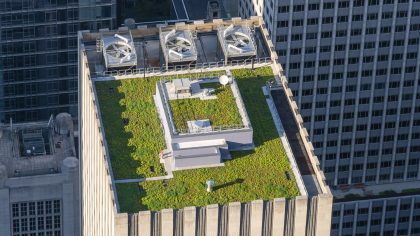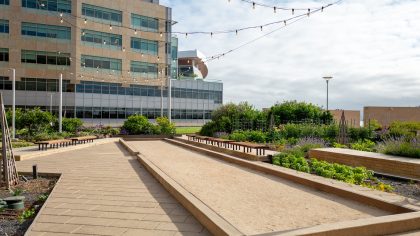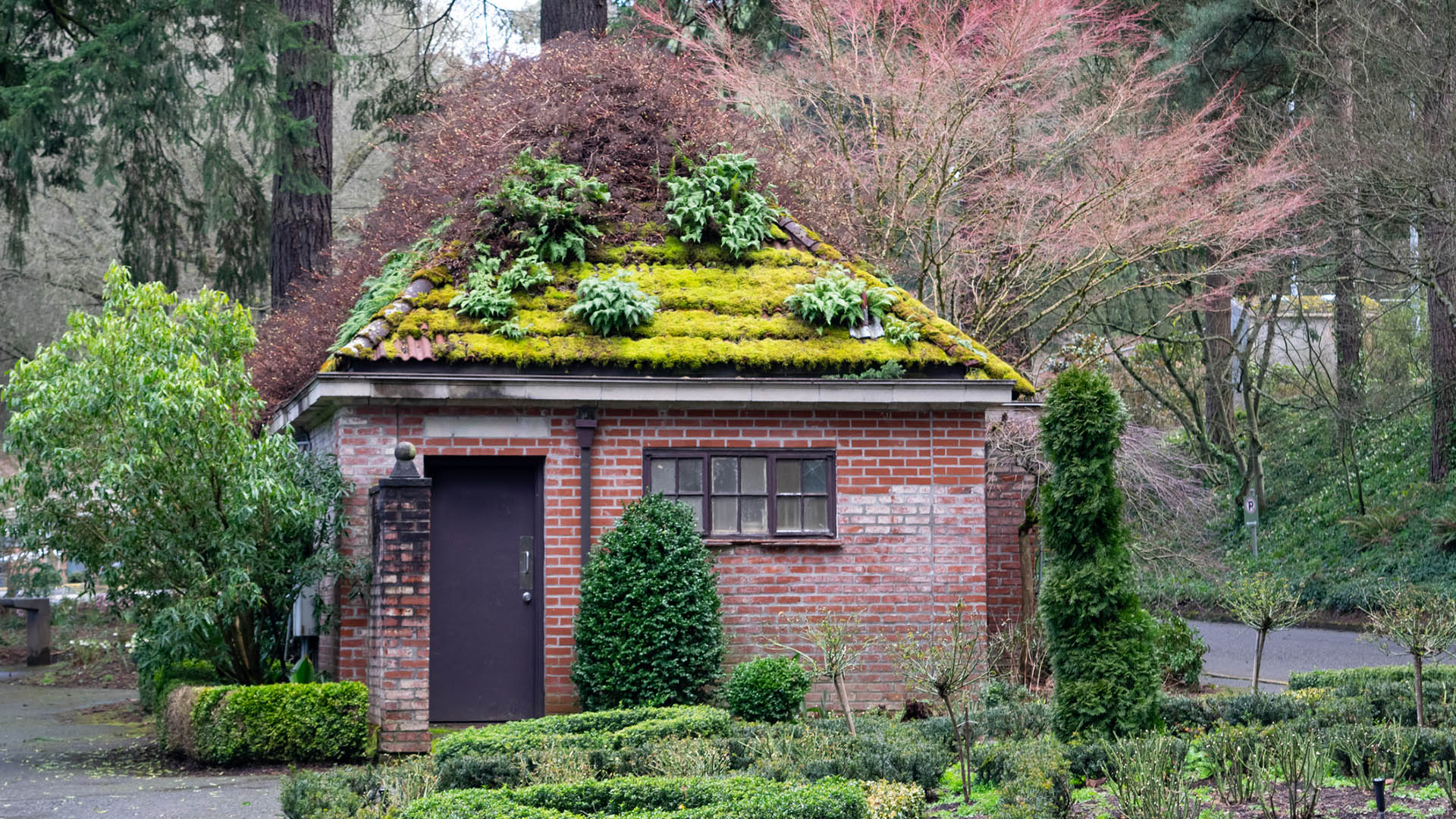One summer, while staying with a friend in San Francisco, we visited the California Academy of Sciences in the city’s Golden Gate Park. With over 46 million specimens, it is one of the largest natural history museums in the world. From the rainforest orbs (like in Bill and Ted’s Excellent Adventure) to the aquarium and even exhibits showcasing optical and sound tricks, the museum was something that could provide entertainment for just about anyone, but what struck me the most was the living roof.

If you’ve ever seen a green roof or living roof, whether in real life or in the movies, a general assumption may be that it’s a beautiful but unattainable option unless you’re wealthy. But what if we told you that having one is easier than you think? Read on as we dive into the beauty and benefits of having a green roof.
A rose by any other name would smell as sweet. Whether you call it a vegetated roof, garden roof, living roof, eco-roof, or green roof, incorporating living plants on your roof can put green in your pocket. Starting centuries ago, and still widely practiced today for home efficiency and conservation techniques, people have been living in houses embedded in hillsides. While not to the extent of a hillside home, city dwellers and more urban areas have been adopting green roofs on houses for decades. The technology has improved and it has become less complicated with more architects and builders taking up the practice, making installing a living roof on your home or business a better idea than ever.
So what is holding homeowners back from installing one on their property? For one, there are a lot of misconceptions about what a green roof can and cannot do. For example, a Forbes article, “6 Busted Green-Roof Myths,” observes that any building can add a green roof or living roof. It’s not necessary for the entire building to be green. So if you’re planning to replace a roof on an existing building, why not consider a living roof?
Another common myth is that a roof garden will cause increased leakage or structural damage. That’s not true, either. Proper planning and preparation on the front end protect the roof and building, and the green covering can actually extend the life of the roof by protecting it from the elements. All of these improvements can increase the value of any building, both residential and commercial. This Old House explains it here.
We also mentioned that people have been using green roofs on houses for decades but recent news articles, blogs, and ways to be more energy and ecologically sustainable have helped them gain even more popularity. That’s because green roofs act as insulation and keep roofs 10-20 degrees cooler, reducing air conditioning and heating costs. Because plants absorb rain, roof gardens also decrease water runoff. Not only that, a living roof replaces the green area that is lost when a house or building is constructed by relocating it on the roof. All of this makes for an environmentally friendly and energy-efficient dream.
Types of Living Roofs
 There are two types of roof gardens: extensive and intensive. An extensive design allows you to choose a self-sustaining design that includes succulents and other plants that are drought-resistant. While all roofs must be watered while they are being created, extensive roofs require little-to-no maintenance once they are established and can survive on rainwater. This is a good choice if access to the roof is limited or you’re in an arid to semi-arid climate.
There are two types of roof gardens: extensive and intensive. An extensive design allows you to choose a self-sustaining design that includes succulents and other plants that are drought-resistant. While all roofs must be watered while they are being created, extensive roofs require little-to-no maintenance once they are established and can survive on rainwater. This is a good choice if access to the roof is limited or you’re in an arid to semi-arid climate.
 An intensive design can include trees, plants, and even paths since it will need fertilizing, watering, and, perhaps, mowing and trimming. Because of this, intensive roofs need to be easily accessible. A hybrid extensive/intensive roof can be chosen and would be best for roofs that have mixed access. If snow is possible, select greenery that will survive if they have to go a few days or weeks. This is especially important for roofs that are difficult to reach.
An intensive design can include trees, plants, and even paths since it will need fertilizing, watering, and, perhaps, mowing and trimming. Because of this, intensive roofs need to be easily accessible. A hybrid extensive/intensive roof can be chosen and would be best for roofs that have mixed access. If snow is possible, select greenery that will survive if they have to go a few days or weeks. This is especially important for roofs that are difficult to reach.
To help avoid future problems, it’s a good idea to hire an experienced professional to install a garden roof just as you would any roof. Choosing a design that will suit the building, home and climate will ensure its success. If you’re a do-it-yourself person, it is still possible for you to do, but you will need to do your homework. Plenty of articles explain the process of preparing a roof, designing, and installing the plants. There are also products and materials available for you to make your dream a reality.
Green roofs offer unlimited possibilities and can enhance the beauty of any building. With proper planning and care, they can improve your quality of life and the functionality of any building. So, are you ready to start planning and building one for your home? Get inspired by these designs and lean into a greener, more energy-efficient future.
Want to learn more about living roofs? Watch the YouTube below from NPR.

